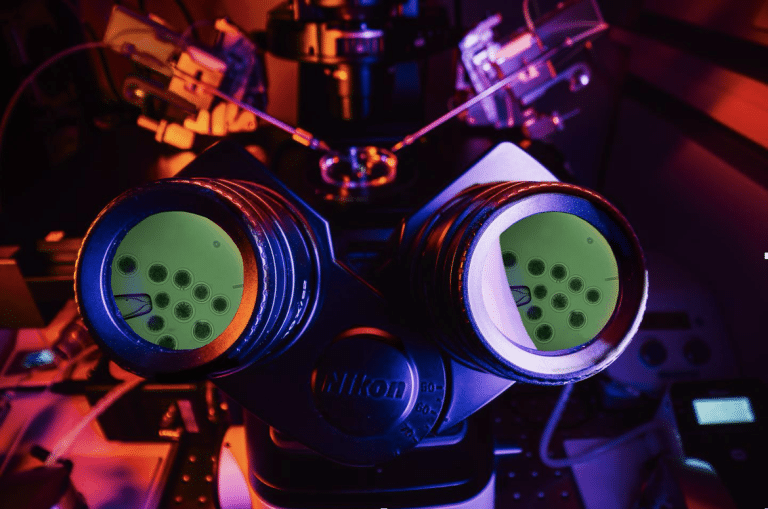In a landmark achievement that marks a turning point in conservation technology, Colossal Biosciences has successfully brought back the dire wolf (Aenocyon dirus), a species that disappeared from Earth approximately 13,000 years ago. This scientific breakthrough represents the world’s first successful de-extinction and showcases the potential of cutting-edge genomic technologies to address biodiversity challenges.
Contents
From Ancient DNA to Living Animals
The journey to bring back the dire wolf involved multiple sophisticated technological steps. First, Colossal’s scientists extracted ancient DNA from dire wolf fossils, including a 13,000-year-old tooth and a 72,000-year-old skull. Through advanced sequencing methods, they reconstructed the dire wolf genome and identified the key genetic variants that made dire wolves unique among canids.
“Our novel approach to iteratively improve our ancient genome in the absence of a perfect reference sets a new standard for paleogenome reconstruction,” explained Dr. Beth Shapiro, Colossal’s Chief Science Officer and a leading expert in ancient DNA. “Together with improved approaches to recover ancient DNA, these computational advances allowed us to resolve the evolutionary history of dire wolves and establish the genomic foundation for de-extinction.”
The team’s analysis revealed that gray wolves are the closest living relatives of dire wolves, with dire wolves and gray wolves sharing 99.5% of their DNA. This close genetic relationship made gray wolves the ideal donor species for the de-extinction process.
Precision Genetic Engineering and Cloning
After identifying the genetic blueprint, Colossal scientists used CRISPR gene-editing technology to precisely modify the genome of gray wolf cells. According to the company’s press release, they performed a record 20 precise edits to the genome across 14 genes, all modifications derived from analysis of the dire wolf genome, with 15 of those edits being the exact extinct variants.
The team used gray wolves as the donor species and collected blood during normal veterinary procedures to establish cell lines from blood epithelial progenitor cells (EPCs). This innovative approach allowed them to create cell lines without invasive tissue sampling.
After editing these cells, the scientists performed somatic cell nuclear transfer (SCNT) – transferring the nucleus of an edited cell into an egg cell that had its nucleus removed. The viable embryos were then transferred into domestic dog surrogates for gestation, leading to the birth of three healthy dire wolf pups: two males named Romulus and Remus, born in October 2024, and a female named Khaleesi, born in January 2025.
“The de-extinction of the dire wolf and an end-to-end system for de-extinction is transformative and heralds an entirely new era of human stewardship of life,” noted Dr. Christopher Mason, a scientific advisor and member of the board of observers for Colossal. “The same technologies that created the dire wolf can directly help save a variety of other endangered animals as well.”
The Dire Wolf Pups: Characteristics and Care
The young dire wolves, now about 6 months and 3 months old respectively, already exhibit classic dire wolf traits. They have thick white fur, broad heads, and hefty builds, weighing approximately 80 pounds at just 6 months old. Their behavior is notably wild – unlike domestic puppies, Romulus and Remus keep their distance from humans, flinching or retreating even from familiar caretakers, demonstrating true wild lupine instincts.
The dire wolf pups reside on a 2,000+ acre protected reserve under round-the-clock care and monitoring. The site, certified by the American Humane Society, includes naturalistic habitats and on-site veterinary support to ensure the animals’ well-being.
“Colossal has achieved American Humane Certification, the prestigious designation ensuring excellence in animal welfare and care,” stated Robin Ganzert, Ph.D., CEO of American Humane Society. “Optimal welfare is evidenced by spacious habitats with ample space and opportunity for animals to socialize, exercise, and exhibit natural behaviors.”
Beyond De-Extinction: Conservation Applications
The technology developed for the dire wolf de-extinction has already shown immediate applications for endangered species conservation. Alongside the dire wolf births, Colossal announced it successfully cloned two litters of critically endangered red wolves (Canis rufus), producing four healthy red wolf pups using the same “non-invasive blood cloning” approach.
With fewer than 20 red wolves remaining in North America, making them the most endangered wolves on the planet, this achievement could significantly impact conservation efforts. Adding Colossal’s red wolves to the captive breeding population would increase the number of founding lineages by 25%.
“The technology they are pursuing may be the key to reversing the sixth mass extinction and making extinction events a thing of the past,” Ganzert added.
Looking Forward
Colossal’s de-extinction of the dire wolf sets a new benchmark for conservation technology. The achievement demonstrates that the theoretical concept of de-extinction is now a practical reality, opening possibilities for preserving and potentially restoring biodiversity through innovative genomic approaches.
Harvard geneticist and co-founder of Colossal, Dr. George Church, emphasized the significance of this milestone: “The dire wolf is an early example of this, including the largest number of precise genomic edits in a healthy vertebrate so far. A capability that is growing exponentially.”
As the dire wolf pups continue to grow and develop under careful monitoring, they represent not just a remarkable scientific achievement, but a symbol of hope that human innovation can help address the biodiversity challenges of our time.

